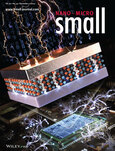
V. Šedajová, M. Kim, R. Langer, G. S. Kumar, L. Liu, Z. Baďura, J. V. Haag, G. Zoppellaro, R. Zbořil, P. K. Thallapally, K. Jayaramulu and M. Otyepka, "2D Nitrogen‐Doped Graphene Materials for Noble Gas Separation," SMALL, Article in press, 2024.
DOI: 10.1002/smll.202408525, IF = 13
Abstract: Noble gases, notably xenon, play a pivotal role in diverse high-tech applications. However, manufacturing xenon is an inherently challenging task, due to its unique properties and trace abundance in the Earth's atmosphere. Consequently, there is a pressing need for the development of efficient methods for the separation of noble gases. Using mild fluorographene chemistry, nitrogen-doped graphene (GNs) materials are synthesized with abundant aromatic regions and extensive nitrogen doping within the vacancies and holes of the aromatic lattice. Due to the organized interlayer “nanochannels”, nitrogen functional groups, and defects within the two-dimensional (2D) structures, GNs exhibits effective selectivity for Xe over Kr at low pressure. This enhanced selectivity is attributed to the stronger binding affinity of Xe to GN compared to Kr. The adsorption is governed by London dispersion forces, as revealed by theoretical calculations using symmetry-adapted perturbation theory (SAPT). Investigation of other GNs differing in nitrogen content, surface area, and pore sizes underscores the significance of nitrogen functional groups, defects, and interlayer nanochannels over the surface area in achieving superior selectivity. This work offers a new perspective on the design and fabrication of functionalized graphene derivatives, exhibiting superior noble gas storage and separation activity exploitable in gas production technologies.
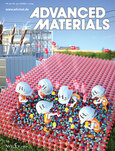
D. Panáček, J. Belza, L. Hochvaldová, Z. Baďura, G. Zoppellaro, M. Šrejber, T. Malina, V. Šedajová, M. Paloncýová, R. Langer, L. Zdražil, J. Zeng, L. Li, E. Zhao, Z. Chen, Z. Xiong, R. Li, A. Panáček, R. Večeřová, P. Kučová, M. Kolář, M. Otyepka, A. Bakandritsos and R. Zbořil, "Single Atom Engineered Antibiotics Overcome Bacterial Resistance," ADVANCED MATERIALS, Article in press, 2024.
DOI: 10.1002/adma.202410652, IF = 32.086
Abstract: The outbreak of antibiotic-resistant bacteria, or “superbugs”, poses a global public health hazard due to their resilience against the most effective last-line antibiotics. Identifying potent antibacterial agents capable of evading bacterial resistance mechanisms represents the ultimate defense strategy. This study shows that –the otherwise essential micronutrient– manganese turns into a broad-spectrum potent antibiotic when coordinated with a carboxylated nitrogen-doped graphene. This antibiotic material (termed NGA-Mn) not only inhibits the growth of a wide spectrum of multidrug-resistant bacteria but also heals wounds infected by bacteria in vivo and, most importantly, effectively evades bacterial resistance development. NGA-Mn exhibits up to 25-fold higher cytocompatibility to human cells than its minimum bacterial inhibitory concentration, demonstrating its potential as a next-generation antibacterial agent. Experimental findings suggest that NGA-Mn acts on the outer side of the bacterial cell membrane via a multimolecular collective binding, blocking vital functions in both Gram-positive and Gram-negative bacteria. The results underscore the potential of single-atom engineering toward potent antibiotics, offering simultaneously a long-sought solution for evading drug resistance development while being cytocompatible to human cells.
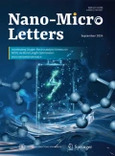
M. A. Deshmukh, A. Bakandritsos and R. Zbořil, "Bimetallic Single-Atom Catalysts for Water Splitting," NANO-MICRO LETTERS, vol. 17, article no 1, 2024.
DOI: 10.1007/s40820-024-01505-2, IF = 23.655
Abstract: Green hydrogen from water splitting has emerged as a critical energy vector with the potential to spearhead the global transition to a fossil fuel-independent society. The field of catalysis has been revolutionized by single-atom catalysts (SACs), which exhibit unique and intricate interactions between atomically dispersed metal atoms and their supports. Recently, bimetallic SACs (bimSACs) have garnered significant attention for leveraging the synergistic functions of two metal ions coordinated on appropriately designed supports. BimSACs offer an avenue for rich metal–metal and metal–support cooperativity, potentially addressing current limitations of SACs in effectively furnishing transformations which involve synchronous proton–electron exchanges, substrate activation with reversible redox cycles, simultaneous multi-electron transfer, regulation of spin states, tuning of electronic properties, and cyclic transition states with low activation energies. This review aims to encapsulate the growing advancements in bimSACs, with an emphasis on their pivotal role in hydrogen generation via water splitting. We subsequently delve into advanced experimental methodologies for the elaborate characterization of SACs, elucidate their electronic properties, and discuss their local coordination environment. Overall, we present comprehensive discussion on the deployment of bimSACs in both hydrogen evolution reaction and oxygen evolution reaction, the two half-reactions of the water electrolysis process.

A. Sin, L. Machala, M. Kim, Z. Baďura, M. Petr, M. Polaskova, P. Novak, M. N. Nadagouda, D. D. Dionysiou and C. Han, "Development of tungsten-modified iron oxides to decompose an over-the-counter painkiller, Acetaminophen by activating peroxymonosulfate," SCIENCE OF THE TOTAL ENVIRONMENT, vol. 951, pp. 175472, 2024.
DOI: 10.1016/j.scitotenv.2024.175472, IF = 10.753
Abstract: Acetaminophen (APAP) is a well-known type of over-the-counter painkillers and is frequently found in surface waterbodies, causing hepatotoxicity and skin irritation. Due to its persistence and chronic effects on the environment, innovative solutions must be provided to decompose APAP, effectively. Innovative catalysts of tungsten-modified iron oxides (TF) were successfully developed via a combustion method and thoroughly characterized using SEM, TEM, XRD, XPS, a porosimetry analysis, Mössbauer spectroscopy, VSM magnetometry, and EPR. With the synthesis method, tungsten was successfully incorporated into iron oxides to form ferrites and other magnetic iron oxides with a high porosity of 19.7 % and a large surface area of 29.5 m2/g. Also, their catalytic activities for APAP degradation by activating peroxymonosulfate (PMS) were evaluated under various conditions. Under optimal conditions, TF 2.0 showed the highest APAP degradation of 95 % removal with a catalyst loading of 2.0 g/L, initial APAP concentration of 5 mg/L, PMS of 6.5 mM, and pH 2.15 at room temperature. No inhibition by solution pHs, alkalinity, and humic acid was observed for APAP degradation in this study. The catalysts also showed chemical and mechanical stability, achieving 100 % degradation of 1 mg/L APAP during reusability tests with three consecutive experiments. These results show that TFs can effectively degrade persistent contaminants of emerging concern in water, offering an impactful contribution to wastewater treatment to protect human health and the ecosystem.

A. K. K. Padinjareveetil, M. Pykal, A. Bakandritsos, R. Zbořil, M. Otyepka and M. Pumera, "Real Time Tracking of Nanoconfined Water‐Assisted Ion Transfer in Functionalized Graphene Derivatives Supercapacitor Electrodes," ADVANCED SCIENCE, Article in press, 2024.
DOI: 10.1002/advs.202307583, IF = 17.521
Abstract: Water molecules confined in nanoscale spaces of 2D graphene layers have fascinated researchers worldwide for the past several years, especially in the context of energy storage applications. The water molecules exchanged along with ions during the electrochemical process can aid in wetting and stabilizing the layered materials resulting in an anomalous enhancement in the performance of supercapacitor electrodes. Engineering of 2D carbon electrode materials with various functionalities (oxygen (─O), fluorine (─F), nitrile (─C≡N), carboxylic (─COOH), carbonyl (─C═O), nitrogen (─N)) can alter the ion/water organization in graphene derivatives, and eventually their inherent ion storage ability. Thus, in the current study, a comparative set of functionalized graphene derivatives—fluorine-doped cyanographene (G–F–CN), cyanographene (G–CN), graphene acid (G–COOH), oxidized graphene acid (G-COOH (O)) and nitrogen superdoped graphene (G–N) is systematically evaluated toward charge storage in various aqueous-based electrolyte systems. Differences in functionalization on graphene derivatives influence the electrochemical properties, and the real-time mass exchange during the electrochemical process is monitored by electrochemical quartz crystal microbalance (EQCM). Electrogravimetric assessment revealed that oxidized 2D acid derivatives (G–COOH (O)) are shown to exhibit high ion storage performance along with maximum water transfer during the electrochemical process. The complex understanding of the processes gained during supercapacitor electrode charging in aqueous electrolytes paves the way toward the rational utilization of graphene derivatives in forefront energy storage applications.

B. Jaleh, A. Nasri, M. Eslamipanah, M. Nasrollahzadeh, M. Daneshnazar, J. Advani, P. Fornasiero, R. Zbořil, M. Antonietti and M. B. Gawande, "State-of-the-Art and Perspectives of Nickel-Based Single-Atom Catalysts," APPLIED CATALYSIS B: ENVIRONMENT AND ENERGY, Article in press, 2024.
DOI: 10.1016/j.apcatb.2024.124590, IF = 24.319
Abstract: Nickel plays a key role in many industrially important catalytic applications owing to its unique inherent features and high catalytic activity. In recent years, nickel single-atom catalysts (Ni-SACs) with well-defined structures have received enormous research attention. Taking into consideration the fact that the catalytic reaction happens on the catalyst's surface, the atom utilization efficiency of SACs can ideally reach 100%, leading to high catalytic efficiency. Due to the high catalytic activity and selectivity, Ni-SACs have been used in numerous significant electrocatalytic, photocatalytic, and thermocatalytic applications. This review provides a critical analysis of the relevant recent progress in Ni-SACs for catalytic applications, and the remaining challenges are discussed for researchers interested in this emerging research area, leading the way to logically design the advanced Ni-SACs for different catalytic processes in the field of energy conversion and storage, and chemical transformations.
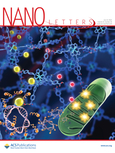
O. Henrotte, Š. Kment and A. Naldoni, "Mass Transport Limitations in Plasmonic Photocatalysis," NANO LETTERS, vol. 24, iss. 29, pp. 8851-8858, 2024.
DOI: 10.1021/acs.nanolett.4c01386, IF = 12.262
Abstract: The interpretation of mechanisms governing hot carrier reactivity on metallic nanostructures is critical, yet elusive, for advancing plasmonic photocatalysis. In this work, we explored the influence of the diffusion of molecules on the hot carrier extraction rate at the solid–liquid interface, which is of fundamental interest for increasing the efficiency of photodevices. Through a spatially defined scanning photoelectrochemical microscopy investigation, we identified a diffusion-controlled regime hindering the plasmon-driven photochemical activity of metallic nanostructures. Using low-power monochromatic illumination (<2 W cm–2), we unveiled the hidden influence of mass transport on the quantum efficiency of plasmonic photocatalysts. The availability of molecules at the solid–liquid interface directly limits the extraction of hot holes, according to their nature and energy, at the reactive spots in Au nanoislands on an ultrathin TiO2 substrate. An intriguing question arises: does the mass transport enhancement caused by thermal effects unlock the reactivity of nonthermal carriers under steady state?
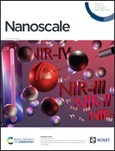
R. Rega, A. Fioravanti, S. M. H. Hejazi, M. Shahrezaei, Š. Kment, P. Maddalena, A. Naldoni and S. Lettieri, "Charge carrier recombination processes, intragap defect states, and photoluminescence mechanisms in stoichiometric and reduced TiO2 brookite nanorods: an interpretation scheme through in situ photoluminescence excitation spectroscopy in controlled environment," NANOSCALE, vol. 16, iss. 23, pp. 11296-11309, 2024.
DOI: 10.1039/d4nr00593g, IF = 8.307
Abstract: The study of titanium dioxide (TiO2) in the brookite phase is gaining popularity as evidence has shown the efficient photocatalytic performance of this less investigated polymorph. It has been recently reported that defective anisotropic brookite TiO2 nanorods display remarkable substrate-specific reactivity towards alcohol photoreforming, with rates of hydrogen production significantly (18-fold) higher than those exhibited by anatase TiO2 nanoparticles. To elucidate the basic photo-physical mechanisms and peculiarities leading to such an improvement in the photoactive efficiency, we investigated the recombination processes of photoexcited charge carriers in both stoichiometric and reduced brookite nanorods via photoluminescence excitation spectroscopy in controlled environment. Through an investigation procedure employing both supragap and subgap excitation during successive exposure to oxidizing and reducing gaseous agents, we firstly obtained an interpretation scheme describing the main photoluminescence and charge recombination pathways in stoichiometric and reduced brookite, which includes information about the spatial and energetic position of the intragap states involved in photoluminescence mechanisms, and secondly identified a specific photoluminescence enhancement process occurring in only reduced brookite nanorods, which indicates the injection of a conduction band electron during ethanol photo-oxidation. The latter finding may shed light on the empirical evidence about the exceptional reactivity of reduced brookite nanorods toward the photo-oxidation of alcohols and the concomitant efficiency of photocatalytic hydrogen generation.
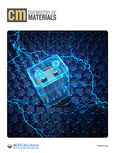
A. Sharma, H. Lee, C. Yeom, H. K. Surendran, C. Narayana, S. B. Eadi, R. Zboril, H. Lee and K. Jayaramulu, "Tailoring Conductive MXene@MOF Interfaces: New Generation of Synapse Devices for Neuromorphic Computing," CHEMISTRY OF MATERIALS, Article in press, 2024.
DOI: 10.1021/acs.chemmater.4c01596, IF = 10.508
Abstract: Synapse devices, pivotal components in neuromorphic computing, demonstrate unique properties that are essential for advanced computing systems. These devices, characterized by their metal/resistive layer/metal structure, rely heavily on active layer material. One important challenge in developing synapse devices for artificial neural networks lies in constructing these networks at a hardware level to achieve in-memory computing, enabling the efficient processing of information while minimizing power consumption. Herein, we present a rational design and in situ synthesis of two-dimensional (2D/2D) heteronanostructures intricately integrating Ti-based metal carbide as Ti-MXene (Ti3C2) with copper-based metal–organic framework as Cu-tetrakis (4-carboxyphenyl) porphyrin (Cu-TCPP) through van der Waals interactions to form a hybrid as [Ti3C2@Cu-TCPP] (1). The hybrid exhibits synergistic properties of both counterparts with an intricate hierarchical structure, ensuring exceptional stability and remarkable conductivity, fundamental for the progression of advanced neuromorphic devices. The resultant hybrids show an advanced neuromorphic device with comprehensive comparative analysis using DC I–V sweeps was conducted to evaluate different device types, focusing on parameters such as the high-resistance state, low-resistance state, and on/off ratio. Results demonstrated that Ti3C2@Cu-TCPP@PVA-based devices exhibited an impressive on/off ratio of approximately 102, outperforming Cu-TCPP@PVA and Ti3C2@PVA-based devices. This highlights the superior performance of Ti3C2@Cu-TCPP@PVA and its potential for advanced applications in neural network systems. Furthermore, the conduction mechanism was elucidated, revealing the dominance of the space-charge limited conduction mechanism during the SET process and the Schottky emission mechanism during the RESET process.
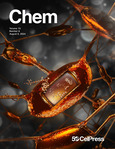
L. Zdražil, A. Cadranel, M. Medved‘, M. Otyepka, R. Zbořil and D. M. Guldi, "Designing carbon dots for enhanced photo-catalysis: Challenges and opportunities," CHEM, Article in press, 2024.
DOI: 10.1016/j.chempr.2024.07.018, IF = 25.832
Abstract: Carbon dots (CDs) are a fascinating class of nanomaterials with a straightforward design by means of an organic chemistry toolbox and an unsurmountable potential in the field of artificial photosynthesis. The vast structural diversity of CDs and the complex photo-physics thereof impose, however, significant challenges on their full utilization. Gathering a profound understanding of the structure-activity relationship and precise identification of the photo-catalytically active sites within CDs is crucial. This review summarizes the current understanding of photo-catalytically active CD-based systems. First, we analyze the structural complexity of CDs in the context of hydrogen photo-production, addressing the different roles of CDs in photo-catalytic hydrogen evolution as photosensitizers, co-catalysts, and catalysts. Second, we present the most important aspects to be considered for the design of CDs-based photo-catalysts, focusing on the fine-tuning of optical properties and charge management and discussing the timescales of events in the photo-excited state. Both experimental and theoretical methods relevant to studying structurally complex CDs are outlined. Finally, we share our thoughts on the future opportunities in CD-based photo-catalysis.
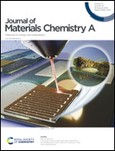
R. Ahmad, Y. Zhang, J. Navrátil, P. Błoński, L. Zdražil, S. Kalytchuk, A. Naldoni, A. L. Rogach, M. Otyepka, R. Zboril and Š. Kment, "Band engineering in iron and silver co-doped double perovskite nanocrystals for selective photocatalytic CO2 reduction," JOURNAL OF MATERIALS CHEMISTRY A, Article in press, 2024.
DOI: 10.1039/d4ta00676c, IF = 14.511
Abstract: Double metal cation halide perovskites are promising alternatives to lead halide perovskites due to their exceptional compositional flexibility and stability. However, their utilization in solar-light harvesting applications has been hindered by their large band gap and the complexity of producing doped or alloyed materials with desirable optoelectronic properties. In this study, we report the colloidal synthesis of iron-doped Cs2NaInCl6 double perovskite nanocrystals (NCs), leading to a significant extension of the absorption edge from 330 nm to 505 nm. We also demonstrate that simultaneous doping with Fe3+ and Ag+ ions allows significant reduction of the optical band gap and precise tuning of electronic band structures of the resulting NCs. The enhanced absorption in the visible region is attributed to the substitution of In-5s by the Fe-3d state, while the introduction of the Ag 4d state upshifts the valence band maximum, inducing a transformative change in the band structure, as confirmed by density functional theory (DFT) calculations. Remarkably, by precisely controlling the band positions of the Fe3+-doped Cs2Ag0.5Na0.5InCl6 NCs, we accomplished the selective photocatalytic reduction of CO2 into CH4, making them readily available for solar-energy conversion technologies.

Š. Kment, A. Bakandritsos, I. Tantis, H. Kmentová, Y. Zuo, O. Henrotte, A. Naldoni, M. Otyepka, R. S. Varma and R. Zbořil, "Single Atom Catalysts Based on Earth-Abundant Metals for Energy-Related Applications," CHEMICAL REVIEWS, Article in press, 2024.
DOI: 10.1021/acs.chemrev.4c00155, IF = 72.087
Abstract: Anthropogenic activities related to population growth, economic development, technological advances, and changes in lifestyle and climate patterns result in a continuous increase in energy consumption. At the same time, the rare metal elements frequently deployed as catalysts in energy related processes are not only costly in view of their low natural abundance, but their availability is often further limited due to geopolitical reasons. Thus, electrochemical energy storage and conversion with earth-abundant metals, mainly in the form of single-atom catalysts (SACs), are highly relevant and timely technologies. In this review the application of earth-abundant SACs in electrochemical energy storage and electrocatalytic conversion of chemicals to fuels or products with high energy content is discussed. The oxygen reduction reaction is also appraised, which is primarily harnessed in fuel cell technologies and metal-air batteries. The coordination, active sites, and mechanistic aspects of transition metal SACs are analyzed for two-electron and four-electron reaction pathways. Further, the electrochemical water splitting with SACs toward green hydrogen fuel is discussed in terms of not only hydrogen evolution reaction but also oxygen evolution reaction. Similarly, the production of ammonia as a clean fuel via electrocatalytic nitrogen reduction reaction is portrayed, highlighting the potential of earth-abundant single metal species.
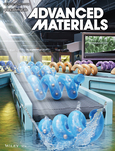
Y. Wang, N. Denisov, S. Qin, D. S. Gonçalves, H. Kim, B. B. Sarma and P. Schmuki, "Stable and Highly Active Single Atom Configurations for Photocatalytic H2 Generation," ADVANCED MATERIALS, Article in press, 2024.
DOI: 10.1002/adma.202400626, IF = 32.086
Abstract: The employment of single atoms (SAs), especially Pt SAs, as co-catalysts in photocatalytic H2 generation has gained significant attention due to their exceptional efficiency. However, a major challenge in their application is the light-induced agglomeration of these SAs into less active nanosized particles under photocatalytic conditions. This study addresses the stability and reactivity of Pt SAs on TiO2 surfaces by investigating various post-deposition annealing treatments in air, Ar, and Ar-H2 environments at different temperatures. It is described that annealing in an Ar-H2 atmosphere optimally stabilizes SA configurations, forming stable 2D rafts of assembled SAs ≈0.5–1 nm in diameter. These rafts not only resist light-induced agglomeration but also exhibit significantly enhanced H2 production efficiency. The findings reveal a promising approach to maintaining the high reactivity of Pt SAs while overcoming the critical challenge of their stability under photocatalytic conditions.
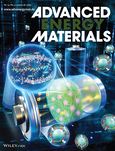
U. Kerketta, H. Kim, N. Denisov and P. Schmuki, "Grätzel‐Type TiO2 Anatase Layers as Host for Pt Single Atoms: Highly Efficient and Stable Photocatalytic Hydrogen Production," ADVANCED ENERGY MATERIALS, vol. 14, iss. 4, pp. 2302998, 2024.
DOI: 10.1002/aenm.202302998, IF = 29.698
Abstract: Single atoms (SAs) represent not only a new frontier in classic heterogeneous catalysis but are also increasingly investigated as co-catalysts in photocatalytic reactions. In contrast to classic catalysis, many photocatalytic platforms require only a very low SA loading density to reach a saturated photocatalytic activity. As a result, an optimized light harvesting/carrier transport combination in the supporting semiconductor becomes the key aspect for the overall photocatalytic efficiency. In this work, it is demonstrated that Grätzel type mesoporous TiO2 layers represent an ideal host for Pt single-atoms (SAs) that allow for a highly effective photocatalytic H2 generation. Using a layer with an optimized geometry, structure, as well as Pt SA loading, a photocatalytic H2 production is achieved of up to ≈2900 µL h−1 (under irradiation at λ = 365 nm and I = 65 mW cm−2) – a performance that is far superior to previous Pt SA/TiO2 structures based on TiO2 nanotubes, nanosheets, or metal organic frameworks. Moreover, such SA/substrate combination provides a highly stable H2 production over time. The present work thus introduces the use of this classic TiO2 nanostructure as the most effective host for Pt SAs and its use for highly efficient photocatalytic H2 production from aqueous solutions.
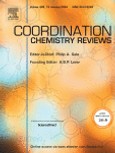
Mansi, V. Shrivastav, P. Dubey, S. Sundriyal, U. K. Tiwari and A. Deep, "Recent advances on core-shell metal-organic frameworks for energy storage applications: Controlled assemblies and design strategies," COORDINATION CHEMISTRY REVIEWS, vol. 499, pp. 215497, 2023.
DOI: 10.1016/j.ccr.2023.215497, IF = 24.833
Abstract: Core-shell metal–organic framework (CSMOF) has attracted the attention of researchers in the material science and nanotechnology research field. The structural properties of CSMOF and their derived material include extortionate specific surface area and porosity, good structural flexibility, high stability, etc. These appealing properties make CSMOF a great alternative for various practical applications. CSMOF has shown great performance as an electrode material for energy storage applications. This review is primarily focused on the factor affecting the assemblies and synthesis of core shell structures, strategy to control the assemblies, synthesis methods, and properties of different CSMOFs for energy storage devices viz. supercapacitors (SC) and batteries. After that, different CSMOF structures are compared in terms of their performance parameters for SC including specific capacitance, capacitance retention, cyclic stability, energy density, and self-discharge.On the other hand, reversible capacity, initial discharge capacity, and cyclic stability are a few performance parameters for Li-ion batteries that are also discussed for different materials.CSMOF’s applications for some other batteries like Na-ion, K-ion, Li-S, Li-Se, and Li-O2 will likewise be discussed in other sections. Eventually, the expansion and future scope of CSMOF and its derivatives are proposed for upcoming energy storage applications.
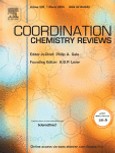
H. B. Kale, A. D. Kute, R. P. Gaikwad, P. Fornasiero, R. Zbořil and M. B. Gawande, "Synthesis and energy applications of copper-based single-atom electrocatalysts," COORDINATION CHEMISTRY REVIEWS, vol. 502, pp. 215602, 2024.
DOI: 10.1016/j.ccr.2023.215602, IF = 24.833
Abstract: Considering the current energy scenario, it is of great importance to design and develop innovative, economically feasible electrocatalysts for the various energy applications. The high cost, and low availability of noble metal-based (Pd, Pt, Ru, etc.) electrocatalysts limit their widespread implementation of electrochemical reactions. Earth-abundant copper-based single-atom electrocatalysts (Cu-based SAEs) possess desired electronic, morphological, and physicochemical properties that have been extensively deployed for the energy applications. In the context of the progress of copper-based SAEs, herein we reviewed the notable advancement in fabrication and applications of Cu-based SAEs for the production of fuels, hydrocarbons, and ammonia. We also addressed the stability of developed electrocatalysts and active sites present in the structure of single-atom copper electrocatalysts. The challenges, and potential insights into the mechanism of action are also described including the ways to enhance the overall SAEs activities by tailoring the active site chemistry on the basis of computational studies and designing the advanced synthesis strategy.
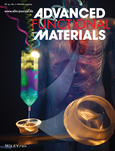
K. Ghosh, S. Ng, P. Lazar, A. K. K. Padinjareveetil, J. Michalička and M. Pumera, "2D Germanane‐MXene Heterostructures for Cations Intercalation in Energy Storage Applications," ADVANCED FUNCTIONAL MATERIALS, vol. 34, iss. 7, pp. 2308793, 2024.
DOI: 10.1002/adfm.202308793, IF = 19.924
Abstract: Heterostructures offer an exceptional possibility of combining individual 2D materials into a new material having altered properties compared to the parent materials. Germanane (GeH) is a 2D material with many favorable properties for energy storage and catalysis, however, its performance is hindered by its low electrical conductivity. To address the low electrochemical performance of GeH, a heterostructure of GeH and Ti3C2Tx is fabricated. The Ti3C2TX is a layered material belonging to the family of MXenes. The resulting heterostructure (GeMXene) at a defined mass ratio of GeH and Ti3C2Tx shows superior capacitive performance that surpasses that of both pristine materials. The effect of the size of cations and anions for intercalation into GeMXene in different aqueous salt solutions is studied. GeMXene allows only cation intercalation, which is evidenced by the gravimetric electrochemical quartz crystal microbalance (EQCM) technique. The capacitive performance of the GeMXene is compared in neutral, acidic, and alkaline electrolytes to determine the best electrochemical performance. This unleashes the potential use of GeMXene heterostructure in different electrolytes for supercapacitors and batteries. This work will pave the way to explore the heterostructures of other 2D materials such as novel MXenes and functionalized germanane for highly energy-storage efficient systems, and beyond.
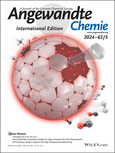
B. Bartolomei, M. Sbacchi, C. Rosso, A. Günay‐Gürer, L. Zdražil, A. Cadranel, S. Kralj, D. M. Guldi and M. Prato, "Synthetic Strategies for the Selective Functionalization of Carbon Nanodots Allow Optically Communicating Suprastructures," ANGEWANDTE CHEMIE INTERNATIONAL EDITION, vol. 63, iss. 5, pp. e202316915, 2024.
DOI: 10.1002/anie.202316915, IF = 16.823
Abstract:
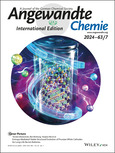
J. H. Kim, S. Wu, L. Zdrazil, N. Denisov and P. Schmuki, "2D Metal–Organic Framework Nanosheets based on Pd‐TCPP as Photocatalysts for Highly Improved Hydrogen Evolution," ANGEWANDTE CHEMIE INTERNATIONAL EDITION, vol. 63, iss. 7, pp. e202319255, 2024.
DOI: 10.1002/anie.202319255, IF = 16.823
Abstract: In this report, a 2D MOF nanosheet derived Pd single-atom catalyst, denoted as Pd-MOF, was fabricated and examined for visible light photocatalytic hydrogen evolution reaction (HER). This Pd-MOF can provide a remarkable photocatalytic activity (a H2 production rate of 21.3 mmol/gh in the visible range), which outperforms recently reported Pt-MOFs (with a H2 production rate of 6.6 mmol/gh) with a similar noble metal loading. Notably, this high efficiency of Pd-MOF is not due to different chemical environment of the metal center, nor by changes in the spectral light absorption. The higher performance of the Pd-MOF in comparison to the analogue Pt-MOF is attributed to the longer lifetime of the photogenerated electron-hole pairs and higher charge transfer efficiency.

S. Wu, L. Wu, N. Denisov, Z. Badura, G. Zoppellaro, X. Yang and P. Schmuki, "Pt Single Atoms on TiO2 Can Catalyze Water Oxidation in Photoelectrochemical Experiments," JOURNAL OF THE AMERICAN CHEMICAL SOCIETY, vol. 146, iss. 24, pp. 16363-16368, 2024.
DOI: 10.1021/jacs.4c03319, IF = 16.383
Abstract: Photoelectrochemical water splitting on n-type semiconductors is highly dependent on catalysis of the rate-determining reaction of O2 evolution. Conventionally, in electrochemistry and photoelectrochemistry O2 evolution is catalyzed by metal oxide catalysts like IrO2 and RuO2, whereas noble metals such as Pt are considered unsuitable for this purpose. However, our study finds that Pt, in its single-atom form, exhibits exceptional cocatalytic properties for photoelectrochemical water oxidation on a TiO2 photoanode, in contrast to Pt in a nanoparticle form. The decoration of Pt single atoms onto TiO2 yields a remarkable current density of 5.89 mA cm–2 at 1.23 VRHE, surpassing bare TiO2 (or Pt nanoparticle decorated TiO2) by 2.52 times. Notably, this enhancement remains consistent over a wide pH range. By accompanying theoretical work, we assign this significant enhancement to an improved charge transfer and separation efficiency along with accelerated kinetics in the oxygen evolution reaction facilitated by the presence of Pt single atoms on the TiO2 surface.
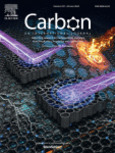
M. Maruthapandi, A. Durairaj, A. Saravanan, J. H. Luong, A. Bakandritsos, A. Gedanken and R. Zboril, "The innovative design of carbon dots on polymer texture for highly selective detection of amino compounds," CARBON, vol. 228, pp. 119414, 2024.
DOI: 10.1016/j.carbon.2024.119414, IF = 11.307
Abstract: Volatile organic compounds (VOCs) are of growing concern due to their toxicity and environmental impact. Their facile detection is thus of a high importance but still challenging because they are unreactive and often present at very low concentrations. Developing sensing schemes for VOCs based on low-cost, sensitive, selective, and user-friendly methods is therefore crucial for environmental monitoring. To address these issues, we herein developed polymer supported carbon dots (CDs) by reacting tetraminobenzene with 2,4,6-trichlorophenyl oxalate using a simple reflux method. Owing to the selection of precursors, polymer supported fluorescent carbon dots (P-CDs) were grown decorating the synthesized polymeric spheres. The P-CDs composites were highly stable, and their fluorescence was drastically quenched by several VOC analytes (ethanolamine, diethanolamine, triethanolamine, and ammonia) due to the rich surface functional groups that could effectively and selectively interact with amines. The polymer component contributed to ascribing excellent photophysical and chemical stability, which is valuable particularly for sensing in complex matrices. As a result, the developed P-CDs exhibited superior properties when applied as VOC sensors, including high selectivity for several amines but not for other organic species, fast response, and very high stability, while offering a simple detection method, and minimum sample pre-treatment. The P-CD design has extended potential for diverse sensing applications, including, for instance, control of prohibited transport of chemicals and post-toxic analysis.

V. Šedajová, J. Štulík, P. Jakubec and M. Otyepka, "Mitigation of Humidity Interference by Graphene Derivatives for Efficient Temperature Sensors without Encapsulation," ADVANCED ELECTRONIC MATERIALS, Article in press, 2024.
DOI: 10.1002/aelm.202400052, IF = 7.633
Abstract: Temperature monitoring and regulation are essential in various environments, including modern industry and living and storage spaces. The growing demand for temperature sensors calls for affordable, efficient, interference-resistant, and eco-friendly solutions. The challenge of humidity interference in constructing temperature sensors often leads to compromising on the dynamic sensor properties in particular due to the need for encapsulation. To this end, this study introduces a temperature sensor leveraging a carefully designed graphene derivative to mitigate the humidity interference. The material, synthesize through scalable fluorographene chemistry with benzylamine, is optimized in order to enhance its properties, which led to achieving peak efficiency with a minimal humidity impact. The sensor demonstrated full functionality across a temperature range from 10 to 90 °C, with a temperature coefficient of resistivity 8.63 × 10−3 K−1, which is more than twice as high as that of conventional platinum thermometers. Remarkably, the sensor exhibited only a 2% change in resistance when exposed to relative humidity in the range of 20 to 70%. Notably, the sensor continues to give a consistent performance even after six months, which proved its stability. The presented device holds promise for evolving into a fully printed, cost-effective and reliable next-generation temperature sensors.

V. Vakati, V. Goyal, A. S. Alshammari, N. V. Kalevaru, S. Wohlrab, K. Natte, R. Zbořil and R. V. Jagadeesh, "Practical and scalable hydrogenation of nitro compounds using palladium-based nanocatalyst under ambient conditions," CATALYSIS TODAY, vol. 442, pp. 114940, 2024.
DOI: 10.1016/j.cattod.2024.114940, IF = 6.562
Abstract: Catalytic hydrogenation at ambient conditions represents an essential and practical methodology, which allows for the more convenient access of fine and bulk chemicals. Here, we report Pd-based nanoparticles (Pd-NPs@SiO2) as an efficient catalyst for the hydrogenation of nitroarenes to anilines at atmospheric pressure of hydrogen and at room temperature. This specific Pd-catalyst allows for the hydrogenation of various functionalized and structurally challenging nitroarenes to valuable anilines, which serve as key building blocks and versatile intermediates in chemical, pharmaceutical and agrochemical industries as well as material technologies. These Pd-nanoparticles exhibited excellent stability and can be recycled and reused at least 6 times without any significant drop in the activity. Notably, this ambient hydrogenation process can be scaled up to several grams.
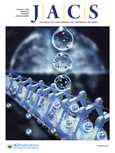
F. Frezza, A. Matěj, A. Sánchez-Grande, M. Carrera, P. Mutombo, M. Kumar, D. Curiel and P. Jelínek, "On-Surface Synthesis of a Radical 2D Supramolecular Organic Framework," JOURNAL OF THE AMERICAN CHEMICAL SOCIETY, vol. 146, iss. 5, pp. 3531-3538, 2024.
DOI: 10.1021/jacs.3c13702
Abstract: The design of supramolecular organic radical cages and frameworks is one of the main challenges in supramolecular chemistry. Their interesting material properties and wide applications make them very promising for (photo)redox catalysis, sensors, or host–guest spin–spin interactions. However, the high reactivity of radical organic systems makes the design of such supramolecular radical assemblies challenging. Here, we report the on-surface synthesis of a purely organic supramolecular radical framework on Au(111), by combining supramolecular and on-surface chemistry. We employ a tripodal precursor, functionalized with 7-azaindole groups that, catalyzed by a single gold atom on the surface, forms a radical molecular product constituted by a π-extended fluoradene-based radical core. The radical products self-assemble through hydrogen bonding, leading to extended 2D domains ordered in a Kagome-honeycomb lattice. This approach demonstrates the potential of on-surface synthesis for developing 2D supramolecular radical organic chemistry.

G. Zoppellaro, M. Medveď, V. Hrubý, R. Zbořil, M. Otyepka and P. Lazar, "Solvent Controlled Generation of Spin Active Polarons in Two-Dimensional Material under UV Light Irradiation," JOURNAL OF THE AMERICAN CHEMICAL SOCIETY, Article in press, 2024.
DOI: 10.1021/jacs.3c13296
Abstract: Polarons belong to a class of extensively studied quasiparticles that have found applications spanning diverse fields, including charge transport, colossal magnetoresistance, thermoelectricity, (multi)ferroism, optoelectronics, and photovoltaics. It is notable, though, that their interaction with the local environment has been overlooked so far. We report an unexpected phenomenon of the solvent-induced generation of polaronic spin active states in a two-dimensional (2D) material fluorographene under UV light. Furthermore, we present compelling evidence of the solvent-specific nature of this phenomenon. The generation of spin-active states is robust in acetone, moderate in benzene, and absent in cyclohexane. Continuous wave X-band electron paramagnetic resonance (EPR) spectroscopy experiments revealed a massive increase in the EPR signal for fluorographene dispersed in acetone under UV-light irradiation, while the system did not show any significant signal under dark conditions and without the solvent. The patterns appeared due to the generation of transient magnetic photoexcited states of polaronic character, which encompassed the net 1/2 spin moment detectable by EPR. Advanced ab initio calculations disclosed that polarons are plausibly formed at radical sites in fluorographene which interact strongly with acetone molecules in their vicinity. Additionally, we present a comprehensive scenario for multiplication of polaronic spin active species, highlighting the pivotal role of the photoinduced charge transfer from the solvent to the electrophilic radical centers in fluorographene. We believe that the solvent-tunable polaron formation with the use of UV light and an easily accessible 2D nanomaterial opens up a wide range of future applications, ranging from molecular sensing to magneto-optical devices.
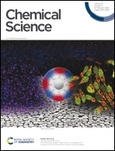
C. L. Kufner, S. Crucilla, D. Ding, P. Stadlbauer, J. Šponer, J. W. Szostak, D. D. Sasselov and R. Szabla, "Photoinduced charge separation and DNA self-repair depend on sequence directionality and stacking pattern," CHEMICAL SCIENCE, vol. 15, iss. 6, pp. 2158-2166, 2024.
DOI: 10.1039/d3sc04971j
Abstract:
Charge separation is one of the most common consequences of the absorption of UV light by DNA. Recently, it has been shown that this process can enable efficient self-repair of cyclobutane pyrimidine dimers (CPDs) in specific short DNA oligomers such as the GAT[double bond, length as m-dash]T sequence. The mechanism was characterized as sequential electron transfer through the nucleobase stack which is controlled by the redox potentials of nucleobases and their sequence. Here, we demonstrate that the inverse sequence T[double bond, length as m-dash]TAG promotes self-repair with higher quantum yields (0.58 ± 0.23%) than GAT[double bond, length as m-dash]T (0.44 ± 0.18%) in a comparative study involving UV-irradiation experiments. After extended exposure to UV irradiation, a photostationary equilibrium between self-repair and damage formation is reached at 33 ± 13% for GAT[double bond, length as m-dash]T and at 40 ± 16% for T[double bond, length as m-dash]TAG, which corresponds to the maximum total yield of self-repair. Molecular dynamics and quantum mechanics/molecular mechanics (QM/MM) simulations allowed us to assign this disparity to better stacking overlap between the G and A bases, which lowers the energies of the key A−˙G+˙ charge transfer state in the dominant conformers of the T[double bond, length as m-dash]TAG tetramer. These conformational differences also hinder alternative photorelaxation pathways of the T[double bond, length as m-dash]TAG tetranucleotide, which otherwise compete with the sequential electron transfer mechanism responsible for CPD self-repair. Overall, we demonstrate that photoinduced electron transfer is strongly dependent on conformation and the availability of alternative photodeactivation mechanisms. This knowledge can be used in the identification and prediction of canonical and modified DNA sequences exhibiting efficient electron transfer. It also further contributes to our understanding of DNA self-repair and its potential role in the photochemical selection of the most photostable sequences on the early Earth.
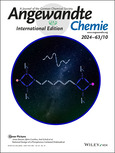
S. Qin, N. Denisov, H. Kim and P. Schmuki, "Photocatalytic H2 Generation: Controlled and Optimized Dispersion of Single Atom Co‐Catalysts Based on Pt‐TCPP Planar Adsorption on TiO2," ANGEWANDTE CHEMIE INTERNATIONAL EDITION, vol. 63, iss. 10, 2024.
DOI: 10.1002/anie.202316660
Abstract: When using single atoms (SAs) as a co-catalyst in photocatalytic H2 generation, achieving a well-dispersed, evenly distributed and adjustable SA surface density on a semiconductor surface is a challenging task. In the present work we use the planar adsorption of tetrakis-(4-carboxyphenyl)-porphyrin (TCPP) and its platinum coordinated analogue, Pt-TCPP, onto anatase TiO2 surfaces to establish a spatially controlled decoration of SAs. We show that the surface Pt SA density can be very well controlled by co-adsorption of Pt-TCPP and TCPP in the planar monolayer regime, and by adjusting the Pt-TCPP to TCPP ratio a desired well dispersed surface density of SAs up to 2.6×105 atoms μm−2 can be established (which is the most effective Pt SA loading for photocatalysis). This distribution and the SA state are maintained after a thermal treatment in air, and an optimized SA density as well as a most active form of Pt for photocatalytic H2 evolution can be established and maintained.
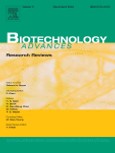
J. Sabotič, E. Bayram, D. Ezra, S. P. Gaudêncio, B. Z. Haznedaroğlu, N. Janež, L. Ktari, A. Luganini, M. Mandalakis, I. Safarik, D. Simes, E. Strode, A. Toruńska-Sitarz, D. Varamogianni-Mamatsi, G. C. Varese and M. I. Vasquez, "A guide to the use of bioassays in exploration of natural resources," BIOTECHNOLOGY ADVANCES, vol. 71, iss. , pp. 108307, 2024.
DOI: 10.1016/j.biotechadv.2024.108307
Abstract: Bioassays are the main tool to decipher bioactivities from natural resources thus their selection and quality are critical for optimal bioprospecting. They are used both in the early stages of compounds isolation/purification/identification, and in later stages to evaluate their safety and efficacy. In this review, we provide a comprehensive overview of the most common bioassays used in the discovery and development of new bioactive compounds with a focus on marine bioresources. We present a comprehensive list of practical considerations for selecting appropriate bioassays and discuss in detail the bioassays typically used to explore antimicrobial, antibiofilm, cytotoxic, antiviral, antioxidant, and anti-ageing potential. The concept of quality control and bioassay validation are introduced, followed by safety considerations, which are critical to advancing bioactive compounds to a higher stage of development. We conclude by providing an application-oriented view focused on the development of pharmaceuticals, food supplements, and cosmetics, the industrial pipelines where currently known marine natural products hold most potential. We highlight the importance of gaining reliable bioassay results, as these serve as a starting point for application-based development and further testing, as well as for consideration by regulatory authorities.
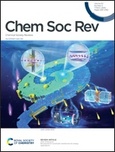
A. Sharma, S. B. Eadi, H. Noothalapati, M. Otyepka, H. Lee and K. Jayaramulu, "Porous materials as effective chemiresistive gas sensors," CHEMICAL SOCIETY REVIEWS, vol. 53, iss. 5, pp. 2530-2577, 2024.
DOI: 10.1039/d2cs00761d
Abstract: Chemiresistive gas sensors (CGSs) have revolutionized the field of gas sensing by providing a low-power, low-cost, and highly sensitive means of detecting harmful gases. This technology works by measuring changes in the conductivity of materials when they interact with a testing gas. While semiconducting metal oxides and two-dimensional (2D) materials have been used for CGSs, they suffer from poor selectivity to specific analytes in the presence of interfering gases and require high operating temperatures, resulting in high signal-to-noise ratios. However, nanoporous materials have emerged as a promising alternative for CGSs due to their high specific surface area, unsaturated metal actives, and density of three-dimensional inter-connected conductive and pendant functional groups. Porous materials have demonstrated excellent response and recovery times, remarkable selectivity, and the ability to detect gases at extremely low concentrations. Herein, our central emphasis is on all aspects of CGSs, with a primary focus on the use of porous materials. Further, we discuss the basic sensing mechanisms and parameters, different types of popular sensing materials, and the critical explanations of various mechanisms involved throughout the sensing process. We have provided examples of remarkable performance demonstrated by sensors using these materials. In addition to this, we compare the performance of porous materials with traditional metal-oxide semiconductors (MOSs) and 2D materials. Finally, we discussed future aspects, shortcomings, and scope for improvement in sensing performance, including the use of metal–organic frameworks (MOFs), covalent-organic frameworks (COFs), and porous organic polymers (POPs), as well as their hybrid counterparts. Overall, CGSs using porous materials have the potential to address a wide range of applications, including monitoring water quality, detecting harmful chemicals, improving surveillance, preventing natural disasters, and improving healthcare.
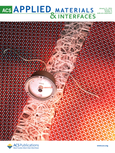
J. Park, A. B. Tesler, E. Gongadze, A. Iglič, P. Schmuki and A. Mazare, "Nanoscale Topography of Anodic TiO2 Nanostructures Is Crucial for Cell–Surface Interactions," ACS APPLIED MATERIALS & INTERFACES, vol. 16, iss. 4, pp. 4430-4438, 2024.
DOI: 10.1021/acsami.3c16033
Abstract: Anodic titanium dioxide (TiO2) nanostructures, i.e., obtained by electrochemical anodization, have excellent control over the nanoscale morphology and have been extensively investigated in biomedical applications owing to their sub-100 nm nanoscale topography range and beneficial effects on biocompatibility and cell interactions. Herein, we obtain TiO2 nanopores (NPs) and nanotubes (NTs) with similar morphologies, namely, 15 nm diameter and 500 nm length, and investigate their characteristics and impact on stem cell adhesion. We show that the transition of TiO2 NPs to NTs occurs via a pore/wall splitting mechanism and the removal of the fluoride-rich layer. Furthermore, in contrast to the case of NPs, we observe increased cell adhesion and proliferation on nanotubes. The enhanced mesenchymal stem cell adhesion/proliferation seems to be related to a 3-fold increase in activated integrin clustering, as confirmed by immunogold labeling with β1 integrin antibody on the nanostructured layers. Moreover, computations of the electric field and surface charge density show increased values at the inner and outer sharp edges of the top surfaces of the NTs, which in turn can influence cell adhesion by increasing the bridging interactions mediated by proteins and molecules in the environment. Collectively, our results indicate that the nanoscale surface architecture of the lateral spacing topography can greatly influence stem cell adhesion on substrates for biomedical applications.
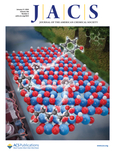
L. Wang, X. Peng, J. Su, J. Wang, A. Gallardo, H. Yang, Q. Chen, P. Lyu, P. Jelínek, J. Liu, M. W. Wong and J. Lu, "Highly Selective On-Surface Ring-Opening of Aromatic Azulene Moiety," JOURNAL OF THE AMERICAN CHEMICAL SOCIETY, vol. 146, iss. 2, pp. 1563-1571, 2024.
DOI: 10.1021/jacs.3c11652
Abstract: Controllable ring-opening of polycyclic aromatic hydrocarbons plays a crucial role in various chemical and biological processes. However, breaking down aromatic covalent C–C bonds is exceptionally challenging due to their high stability and strong aromaticity. This study presents a seminal report on the precise and highly selective on-surface ring-opening of the seven-membered ring within the aromatic azulene moieties under mild conditions. The chemical structures of the resulting products were identified using bond-resolved scanning probe microscopy. Furthermore, through density functional theory calculations, we uncovered the mechanism behind the ring-opening process and elucidated its chemical driving force. The key to achieving this ring-opening process lies in manipulating the local aromaticity of the aromatic azulene moiety through strain-induced internal ring rearrangement and cyclodehydrogenation. By precisely controlling these factors, we successfully triggered the desired ring-opening reaction. Our findings not only provide valuable insights into the ring-opening process of polycyclic aromatic hydrocarbons but also open up new possibilities for the manipulation and reconstruction of these important chemical structures.
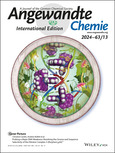
K. Biswas, Q. Chen, S. Obermann, J. Ma, D. Soler‐Polo, J. Melidonie, A. Barragán, A. Sánchez‐Grande, K. Lauwaet, J. M. Gallego, R. Miranda, D. Écija, P. Jelínek, X. Feng and J. I. Urgel, "On‐Surface Synthesis of Non‐Benzenoid Nanographenes Embedding Azulene and Stone‐Wales Topologies," ANGEWANDTE CHEMIE INTERNATIONAL EDITION, vol. 63, iss. 13, 2024.
DOI: 10.1002/anie.202318185
Abstract: The incorporation of non-benzenoid motifs in graphene nanostructures significantly impacts their properties, making them attractive for applications in carbon-based electronics. However, understanding how specific non-benzenoid structures influence their properties remains limited, and further investigations are needed to fully comprehend their implications. Here, we report an on-surface synthetic strategy toward fabricating non-benzenoid nanographenes containing different combinations of pentagonal and heptagonal rings. Their structure and electronic properties were investigated via scanning tunneling microscopy and spectroscopy, complemented by computational investigations. After thermal activation of the precursor P on the Au(111) surface, we detected two major nanographene products. Nanographene Aa−a embeds two azulene units formed through oxidative ring-closure of methyl substituents, while Aa−s contains one azulene unit and one Stone-Wales defect, formed by the combination of oxidative ring-closure and skeletal ring-rearrangement reactions. Aa−a exhibits an antiferromagnetic ground state with the highest magnetic exchange coupling reported up to date for a non-benzenoid containing nanographene, coexisting with side-products with closed shell configurations resulted from the combination of ring-closure and ring-rearragement reactions (Ba−a, Ba−s, Bs-a and Bs−s). Our results provide insights into the single gold atom assisted synthesis of novel NGs containing non-benzenoid motifs and their tailored electronic/magnetic properties.
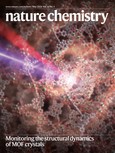
S. Song, A. Pinar Solé, A. Matěj, G. Li, O. Stetsovych, D. Soler, H. Yang, M. Telychko, J. Li, M. Kumar, Q. Chen, S. Edalatmanesh, J. Brabec, L. Veis, J. Wu, P. Jelinek and J. Lu, "Highly entangled polyradical nanographene with coexisting strong correlation and topological frustration," NATURE CHEMISTRY, Article in press, 2024.
DOI: 10.1038/s41557-024-01453-9
Abstract: Open-shell nanographenes exhibit unconventional π-magnetism arising from topological frustration or strong electron–electron interaction. However, conventional design approaches are typically limited to a single magnetic origin, which can restrict the number of correlated spins or the type of magnetic ordering in open-shell nanographenes. Here we present a design strategy that combines topological frustration and electron–electron interactions to fabricate a large fully fused ‘butterfly’-shaped tetraradical nanographene on Au(111). We employ bond-resolved scanning tunnelling microscopy and spin-excitation spectroscopy to resolve the molecular backbone and reveal the strongly correlated open-shell character, respectively. This nanographene contains four unpaired electrons with both ferromagnetic and anti-ferromagnetic interactions, harbouring a many-body singlet ground state and strong multi-spin entanglement, which is well described by many-body calculations. Furthermore, we study the magnetic properties and spin states in the nanographene using a nickelocene magnetic probe. The ability to imprint and characterize many-body strongly correlated spins in polyradical nanographenes paves the way for future advancements in quantum information technologies.
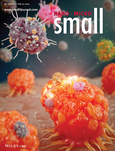
V. S. Tuchin, E. A. Stepanidenko, A. A. Vedernikova, S. A. Cherevkov, D. Li, L. Li, A. Döring, M. Otyepka, E. V. Ushakova and A. L. Rogach, "Optical Properties Prediction for Red and Near‐Infrared Emitting Carbon Dots Using Machine Learning," SMALL, Article in press, 2024.
DOI: 10.1002/smll.202310402
Abstract: Functional nanostructures build up a basis for the future materials and devices, providing a wide variety of functionalities, a possibility of designing bio-compatible nanoprobes, etc. However, development of new nanostructured materials via trial-and-error approach is obviously limited by laborious efforts on their syntheses, and the cost of materials and manpower. This is one of the reasons for an increasing interest in design and development of novel materials with required properties assisted by machine learning approaches. Here, the dataset on synthetic parameters and optical properties of one important class of light-emitting nanomaterials – carbon dots are collected, processed, and analyzed with optical transitions in the red and near-infrared spectral ranges. A model for prediction of spectral characteristics of these carbon dots based on multiple linear regression is established and verified by comparison of the predicted and experimentally observed optical properties of carbon dots synthesized in three different laboratories. Based on the analysis, the open-source code is provided to be used by researchers for the prediction of optical properties of carbon dots and their synthetic procedures.

A. Cahlík, M. Ondráček, C. Wäckerlin, A. P. Solé, O. Siri, M. Švec and P. Jelínek, "Light-Controlled Multiconfigurational Conductance Switching in a Single 1D Metal–Organic Wire," ACS NANO, vol. 18, iss. 13, pp. 9576-9583, 2024.
DOI: 10.1021/acsnano.3c12909
Abstract: Precise control of multiple spin states on the atomic scale presents a promising avenue for designing and realizing magnetic switches. Despite substantial progress in recent decades, the challenge of achieving control over multiconfigurational reversible switches in low-dimensional nanostructures persists. Our work demonstrates multiple, fully reversible plasmon-driven spin-crossover switches in a single π-d metal–organic chain suspended between two electrodes. The plasmonic nanocavity stimulated by external visible light allows for reversible spin crossover between low- and high-spin states of different cobalt centers within the chain. We show that the distinct spin configurations remain stable for minutes under cryogenic conditions and can be nonperturbatively detected by conductance measurements. This multiconfigurational plasmon-driven spin-crossover demonstration extends the available toolset for designing optoelectrical molecular devices based on SCO compounds.
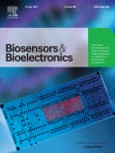
M. Nalepa, D. Panáček, I. Dědek, P. Jakubec, V. Kupka, V. Hrubý, M. Petr and M. Otyepka, "Graphene derivative-based ink advances inkjet printing technology for fabrication of electrochemical sensors and biosensors," BIOSENSORS AND BIOELECTRONICS, vol. 256, pp. 116277, 2024.
DOI: 10.1016/j.bios.2024.116277
Abstract: The field of biosensing would significantly benefit from a disruptive technology enabling flexible manufacturing of uniform electrodes. Inkjet printing holds promise for this, although realizing full electrode manufacturing with this technology remains challenging. We introduce a nitrogen-doped carboxylated graphene ink (NGA-ink) compatible with commercially available printing technologies. The water-based and additive-free NGA-ink was utilized to produce fully inkjet-printed electrodes (IPEs), which demonstrated successful electrochemical detection of the important neurotransmitter dopamine. The cost-effectiveness of NGA-ink combined with a total cost per electrode of $0.10 renders it a practical solution for customized electrode manufacturing. Furthermore, the high carboxyl group content of NGA-ink (13 wt%) presents opportunities for biomolecule immobilization, paving the way for the development of advanced state-of-the-art biosensors. This study highlights the potential of NGA inkjet-printed electrodes in revolutionizing sensor technology, offering an affordable, scalable alternative to conventional electrochemical systems.
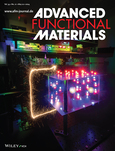
A. Jancik‐Prochazkova, H. Kmentova, X. Ju, S. Kment, R. Zboril and M. Pumera, "Precision Engineering of Nanorobots: Toward Single Atom Decoration and Defect Control for Enhanced Microplastic Capture," ADVANCED FUNCTIONAL MATERIALS, Article in press, 2024.
DOI: 10.1002/adfm.202402567
Abstract: Nanorobots are being received with a great attention for their move-sense-and-act capabilities that often originate from catalytic decomposition of fuels. In the past decade, single-atom engineering has demonstrated exceptional efficiency in catalysis, energy-related technologies, and medicine. Here, a novel approach involving point defect engineering and the incorporation of platinum (Pt) single atoms and atomic level species onto the surface of titanium dioxide nanotubes (TiO2-NT)-based nanorobots is presented and its impact on the propulsion capabilities of the resulting nanorobots is investigated. The achievement of point defect engineering is realized through the annealing of TiO2-NT in a hydrogen atmosphere yielding to the point-defect decorated nanotube (TiO2-HNT) nanorobots. Subsequently, the atomic level Pt species decorated TiO2 nanotube (TiO2-SA-NT) nanorobots are achieved through a wet-chemical deposition process. Whereas TiO2-SA-NT nanorobots showed the highest negative photogravitaxis when irradiated with ultraviolet (UV) light, TiO2-HNT nanorobots reached the highest velocity calculated in 2D. Both TiO2-HNT and TiO2-SA-NT nanorobots demonstrated a pronounced affinity for microplastics, exhibiting the capability to irreversibly capture them. This pioneering approach utilizing point-defect and atomic level Pt species nanorobotics is anticipated to pave the way for highly efficient solutions in the remediation of nano- and microplastics and related environmental technologies.
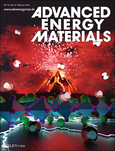
P. Dubey, V. Shrivastav, T. Boruah, G. Zoppellaro, R. Zbořil, A. Bakandritsos and S. Sundriyal, "Unveiling the Potential of Covalent Organic Frameworks for Energy Storage: Developments, Challenges, and Future Prospects," ADVANCED ENERGY MATERIALS, Article in press, 2024.
DOI: 10.1002/aenm.202400521
Abstract: Covalent organic frameworks (COFs) are porous structures emerging as promising electrode materials due to their high structural diversity, controlled and wide pore network, and amenability to chemical modifications. COFs are solely composed of periodically arranged organic molecules, resulting in lightweight materials. Their inherent properties, such as extended surface area and diverse framework topologies, along with their high proclivity to chemical modification, have positioned COFs as sophisticated materials in the realm of electrochemical energy storage (EES). The modular structure of COFs facilitates the integration of key functions such as redox-active moieties, fast charge diffusion channels, composite formation with conductive counterparts, and highly porous network for accommodating charged energy carriers, which can significantly enhance their electrochemical performance. However, ascribing intricate porosity and redox-active functionalities to a single COF structure, while maintaining long-term electrochemical stability, is challenging. Efforts to overcome these hurdles embrace strategies such as the implementation of reversible linkages for structural flexibility, stimuli-responsive functionalities, and incorporating chemical groups to promote the formation of COF heterostructures. This review focuses on the recent progress of COFs in EES devices, such as batteries and supercapacitors, through a meticulous exploration of the latest strategies aimed at optimizing COFs as advanced electrodes in future EES technologies.
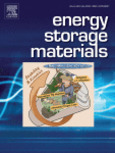
Q. Jin, M. Khandelwal and W. Kim, "Ultrafast high-capacitance supercapacitors employing carbons derived from Al-based metal-organic frameworks," ENERGY STORAGE MATERIALS, vol. 70, iss. , pp. 103464, 2024.
DOI: 10.1016/j.ensm.2024.103464
Abstract:
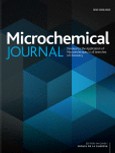
S. Hradilova, T. Zavodna, J. Belza, M. Irimia-Vladu, N. S. Sariciftci, C. Yumusak and K. Polakova, "Biocompatibility assessment of organic semiconductor pigments epindolidione and quinacridone," MICROCHEMICAL JOURNAL, vol. 202, pp. 110740, 2024.
DOI: 10.1016/j.microc.2024.110740
Abstract: Organic colorants epindolidione (EPI) and quinacridone (QUI) are commercially available hydrogen-bonded semiconductor pigments. Despite their suitable properties for bioelectronic applications, their biocompatibility has not been thoroughly examined yet. In this study, thin EPI and QUI layers were applied on well plates by vacuum deposition technique followed by short and long-term in vitro biocompatibility study. In vitro testing represents a relatively fast and cheap approach, especially suitable for screening testing and prioritization of materials for further research. LIVE/DEAD assay, cell cycle analysis, adhesion and morphology of NIH 3T3 mouse fibroblasts have been investigated up to 7 days using flow cytometry and fluorescent optical microscopy. In summary, no significant differences were observed in viability, cell morphology, or attachment capabilities between control cells and cells grown on the EPI or QUI surfaces or cells cultivated in medium harvested from EPI- or QUI-coated wells. Our results suggest that both pigments are highly biocompatible. The absence of adverse biological effects of EPI and QUI together with their low cost and availability indicate their high application potential in next-generation bioelectronic devices.
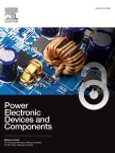
V. Hrubý, V. Šedajová, P. Jakubec, A. Bakandritsos, R. Zbořil and M. Otyepka, "Unleashing the power: Superior properties of fluorographene-derived materials for energy storage applications," POWER ELECTRONIC DEVICES AND COMPONENTS, vol. 7, pp. 100058, 2024.
DOI: 10.1016/j.pedc.2024.100058
Abstract: Fluorographene exhibits a rich chemistry and a wide range of applications in energy storage devices. This review, which is based on our lab results acquired in the last decade, explores the synthesis, properties, and performance of fluorographene-based materials in supercapacitors and batteries. Fluorographene can be prepared through mechanical or chemical delamination of graphite fluoride, allowing for scalable synthesis and further chemical processing. The chemical versatility of fluorographene enables a wide portfolio of chemical reactions, leading to a new class of graphene derivatives. Graphene acid, a product of fluorographene chemistry, exhibits excellent specific capacitance, cycling stability, and rate capability. Hybridizing graphene acid with metal-organic frameworks can achieve even higher energy and power densities. Furthermore, nitrogen-doped graphene derived from fluorographene demonstrates remarkable capacitive behavior, making it an efficient electrode material for supercapacitors. Additionally, fluorographene-based materials, such as graphene acid, graphene-sulfur hybrids, and graphene-based anodes, have exhibited outstanding performance in lithium-ion and lithium-sulfur batteries. The scalable synthesis, high performance, and versatility of fluorographene-derived materials render them attractive for practical energy storage applications. The unique properties and wide range of chemistries offered by fluorographene chemistry open new possibilities for improving advanced energy storage devices.

V. B. Saptal, P. Ranjan, R. Zbořil, M. Nowicki and J. Walkowiak, "Magnetically Recyclable Borane Lewis Acid Catalyst for Hydrosilylation of Imines and Reductive Amination of Carbonyls," CHEMSUSCHEM, Article in press, 2024.
DOI: 10.1002/cssc.202400058
Abstract:
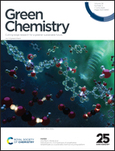
D. S. Chaudhari, R. P. Upadhyay, G. Y. Shinde, M. B. Gawande, J. Filip, R. S. Varma and R. Zbořil, "A review on sustainable iron oxide nanoparticles: syntheses and applications in organic catalysis and environmental remediation," GREEN CHEMISTRY, Article in press, 2024.
DOI: 10.1039/d4gc01870b
Abstract:

T. Bridová, C. Rajnák, J. Titiš, E. Samoľová, K. Tran, O. Malina, A. Bieńko, F. Renz, M. Gembický and R. Boča, "A mononuclear Fe(iii ) complex showing thermally induced spin crossover and slow magnetic relaxation with reciprocating thermal behaviour," DALTON TRANSACTIONS, vol. 53, iss. 26, pp. 10824-10828, 2024.
DOI: 10.1039/d4dt00642a, IF = 4.569
Abstract: AC susceptibility measurements of [FeIII(L5)(NCSe)] reveal a field supported slow magnetic relaxation. On cooling, the relaxation time of the high-frequency fraction decreases which is a sign of reciprocating thermal behaviour. The relaxation time for the low-frequency mode at T = 2.0 K is as high as τ(LF) = 2.0 s.


